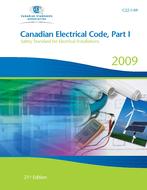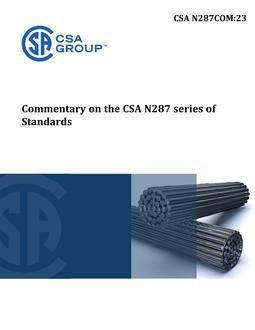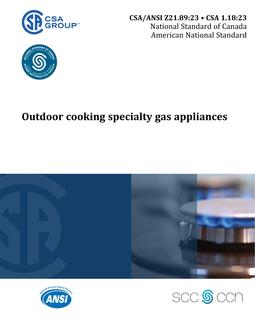
CSA C22.1-09 PACKAGE
- Comments Off on CSA C22.1-09 PACKAGE
- CSA
Click here to purchase
Smart CD-ROM also available!
C22.1-09
Preface
This twenty-first edition of the Canadian Electrical Code, Part I, was approved by the Committee on the Canadian Electrical Code, Part I, and by the Regulatory Authority Committee at their June 2008 meetings in Calgary, Alberta. This twenty-first edition supersedes the previous editions, published in 2006, 2002, 1998, 1994, 1990, 1986, 1982, 1978, 1975, 1972, 1969, 1966, 1962, 1958, 1953, 1947, 1939, 1935, 1930, and 1927.
A new Section 58 was added to cover requirements for passenger ropeways and similar equipment. In addition, there are significant changes to Sections 0, 10, 18, 26, 46, and 68. Sections 12 and 32 have been revised to reflect new technology and industry practices.
The designation for receptacle configuration type 5-20RA (“T-slot”) has been revised to 5-20R throughout the Code, and the configuration previously designated as 5-20R is now designated 5-20RA to recognize that this configuration is being phased out. Similarly, the designations for 6-20R and 6-20RA configurations have been interchanged throughout the Code.
The term “light fixture” has been replaced by “luminaire” throughout the Code, and all references to HFT conduit have been deleted.
Scope
This Code covers all electrical work and electrical equipment operating or intended to operate at all voltages in electrical installations for buildings, structures, and premises, including factory-built relocatable and non-relocatable structures, and self-propelled marine vessels stationary for periods exceeding five months and connected to a shore supply of electricity continuously or from time to time, with the following exceptions:a) installations or equipment employed by an electric, communication, or community antenna distribution system utility in the exercise of its function as a utility, as recognized by the regulatory authority having jurisdiction, and located outdoors or in buildings or sections of buildings used for that purpose;b) equipment and facilities that are used in the operation of an electric railway and are supplied exclusively from circuits that supply the motive power;c) installations or equipment used for railway signalling and railway communication purposes, and located outdoors or in buildings or sections of buildings used exclusively for such installations;d) aircraft; ande) electrical systems in ships that are regulated under Transport Canada.For mines and quarry applications, see also CAN/CSA-M421.
This Code and any standards referenced in it do not make or imply any assurance or guarantee by the authority adopting this Code with respect to life expectancy, durability, or operating performance of equipment and materials so referenced.
C22.1 HB-09
This Handbook provides background information on the reasons behind the requirements in the Canadian Electrical Code, Part I, and gives an explanation of each Rule in plain, easy-to-understand language. The Handbook is intended to provide a clearer understanding of the safety requirements of the Code.
The content of this Handbook is not meant to form a code of mandatory requirements. The mandatory language (“shall”) that is used in the CE Code, Part I, has not been used here. Care has been taken to ensure that the intent of the Code Rules is clear to the users of the Handbook. However, users of the Handbook must not under any circumstances rely on it to determine the current requirements of the Code. As always, referencemust be made to the Code itself and any local amendments. CSA does not assume responsibility for any errors or omissions resulting from the information contained in this Handbook.
The Rules in the CE Code, Part I, are divided into two groups. Sections 0 to 16 and 26 are considered General Sections, and the other Sections supplement or amend those General Sections. Therefore a requirement in the supplementary Sections takes precedence over a general requirement. For example,* Rule 12-1008 requires three threads to be engaged when making a threaded connection, whereas Rule 18-106 requires five threads to be engaged when making a threaded connection in a Class I, Zone 1 area.* Section 4 permits the use of aluminum conductors, but Rule 32-100 does not allow aluminum conductors to be used in fire alarm systems.
Product Details
- Published:
- 2009
- Number of Pages:
- 1304
- File Size:
- 1 file , 26 MB
- Product Code(s):
- 2419649, 2020563



